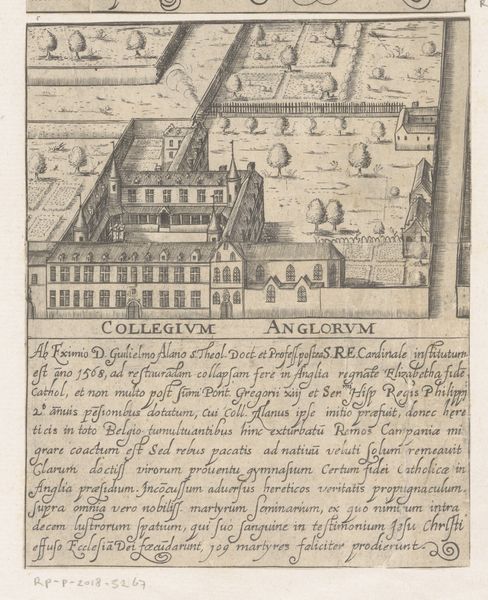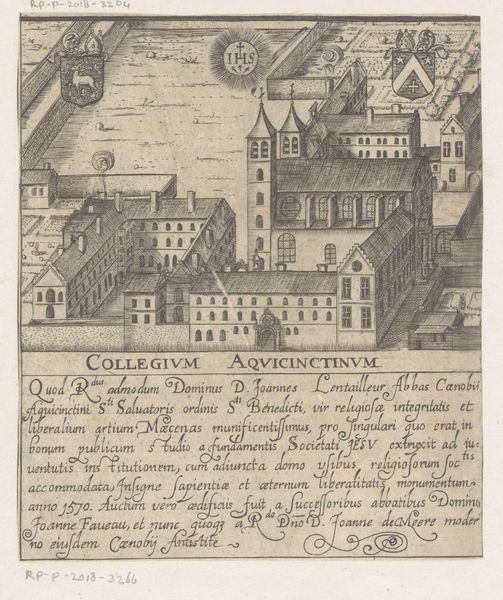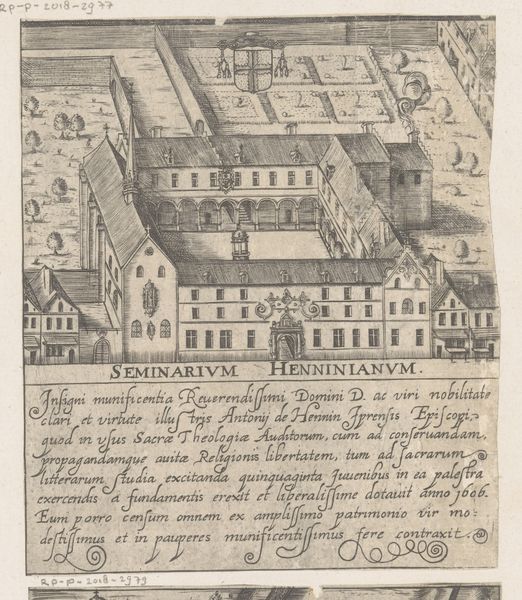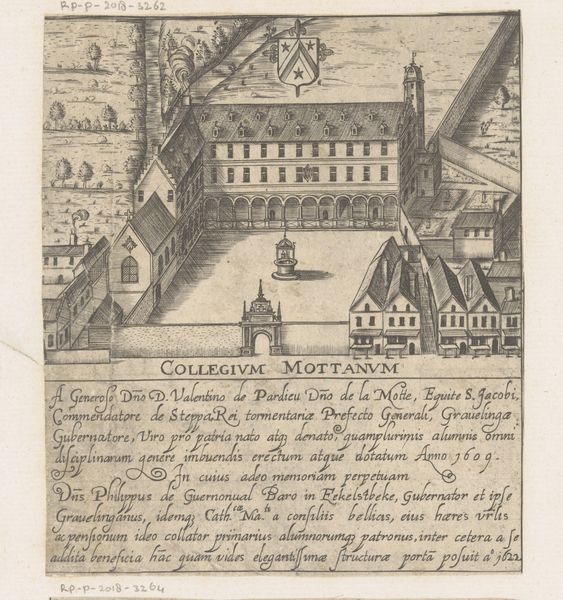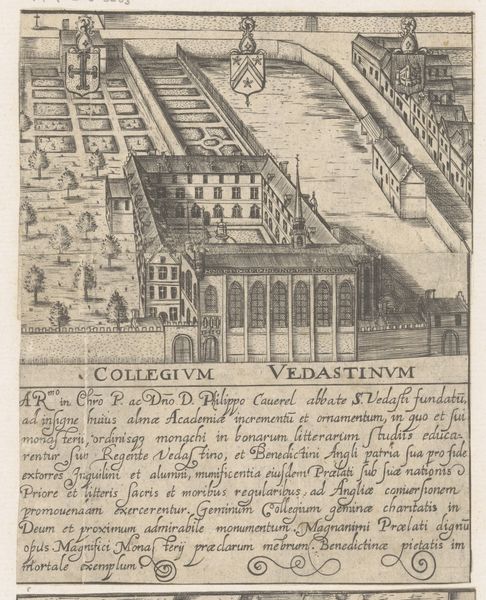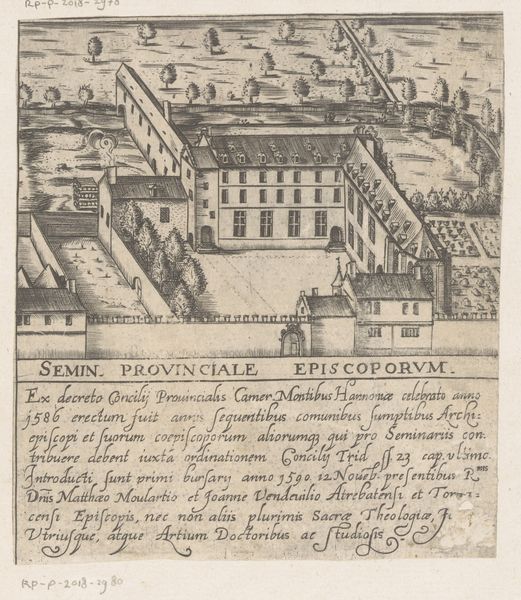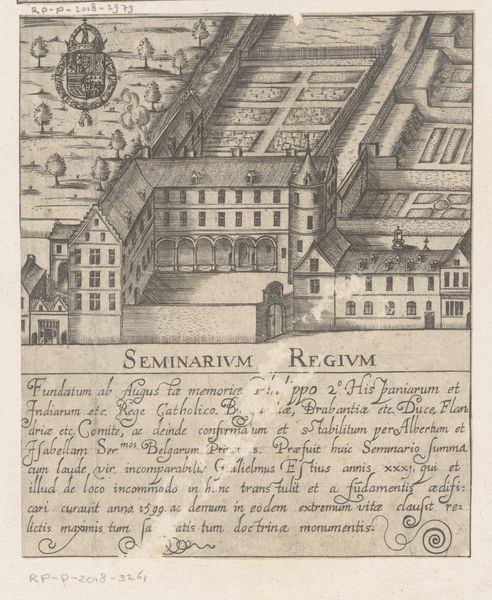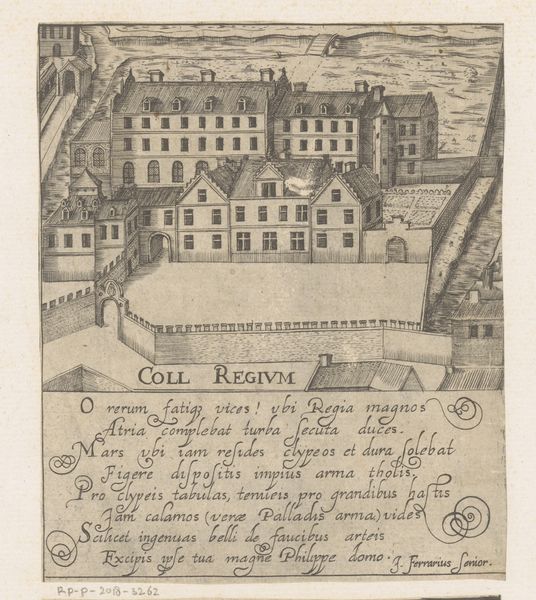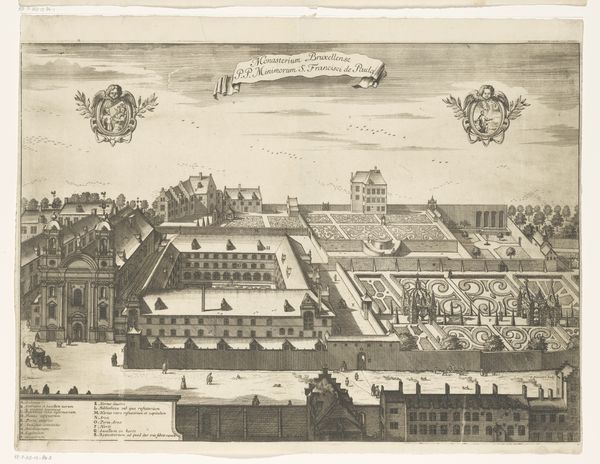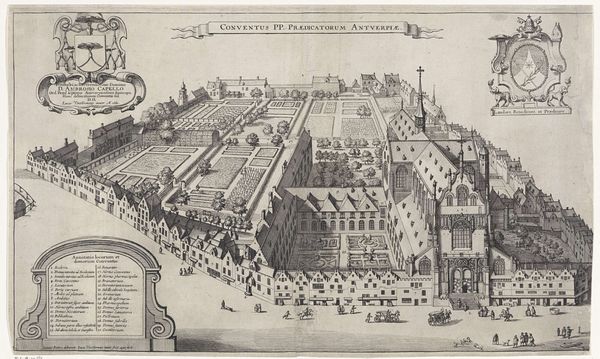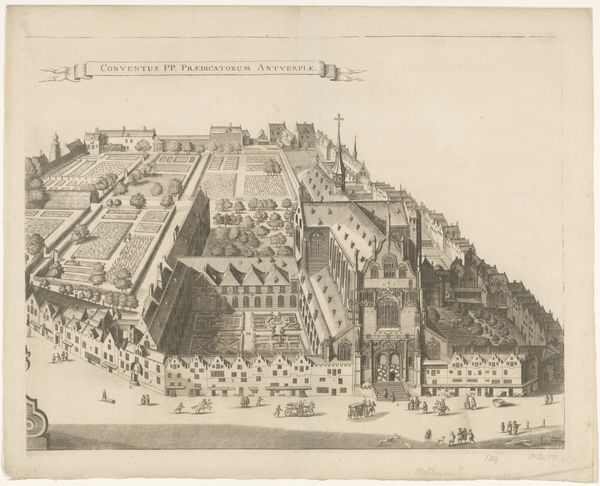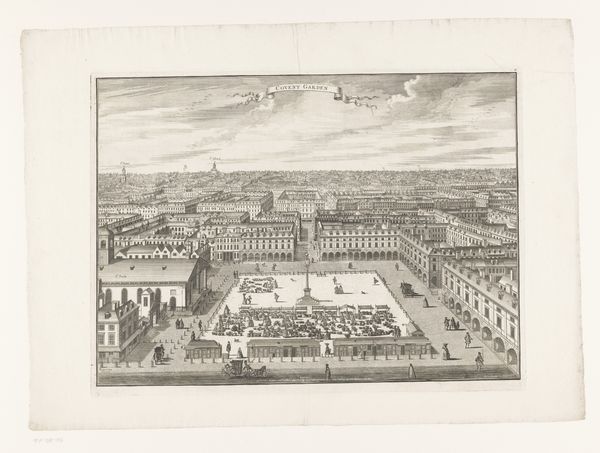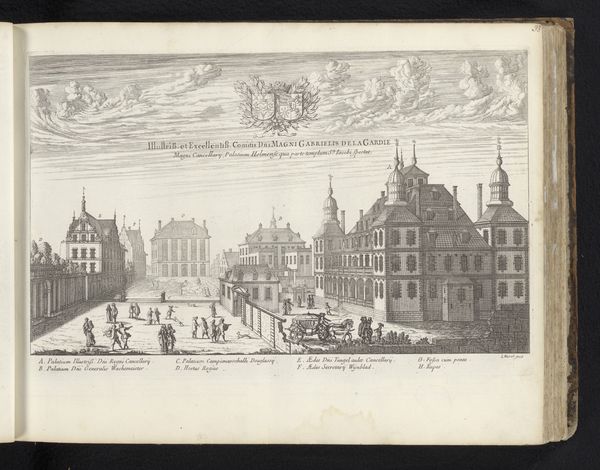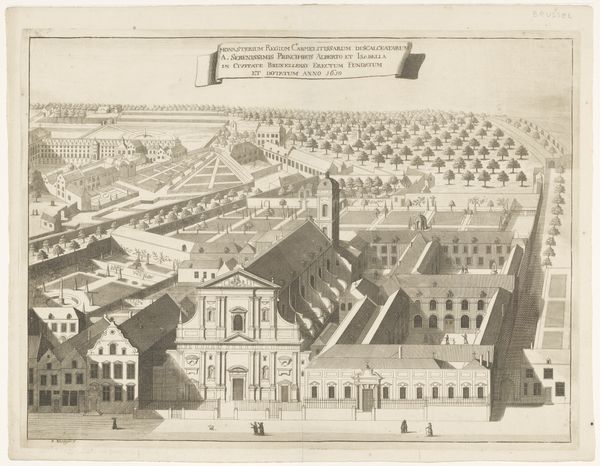
print, engraving, architecture
#
baroque
# print
#
old engraving style
#
perspective
#
geometric
#
geometric-abstraction
#
line
#
cityscape
#
history-painting
#
engraving
#
architecture
Dimensions: height 145 mm, width 122 mm
Copyright: Rijks Museum: Open Domain
Editor: Here we have "College van Marchianense," an engraving dating between 1605 and 1680 by Filippo Ferrari. It depicts a bird's-eye view of a college or monastery. The precision of the lines is striking, but the overall perspective feels a little skewed, almost dreamlike. What stands out to you about this print? Curator: As a materialist, I am immediately drawn to the labor involved in its production. Think about the engraver meticulously carving these lines into a metal plate, the time and skill required. Furthermore, what sort of cultural values did the College try to manifest in built material such as the building's geometry and ornamentation? Consider the social context: printmaking in this era served as a crucial medium for disseminating architectural ideas and promoting institutions. Editor: So you're saying that the print isn't just about representing a building; it's about the whole system that made it possible, from the artisan's labor to the college's reputation? Curator: Precisely! The choice of architecture as a subject speaks to power dynamics. Who commissioned the print? What message were they trying to convey about the college's status and influence? And what about the materiality of the print itself – the ink, the paper – and how those elements shaped its accessibility and reception. Was this intended for mass distribution or a select elite? Editor: I hadn't really considered the print as an object with its own social life. It is fascinating to consider how prints helped disseminate architecture to places who would never see these buildings themselves. Curator: Absolutely! By examining the means of production and consumption, we gain a deeper understanding of the cultural values embedded in this image. What did you get out of our analysis? Editor: Now, when I see it, I think not just of a building, but the whole web of production, labor, and power surrounding it.
Comments
No comments
Be the first to comment and join the conversation on the ultimate creative platform.
